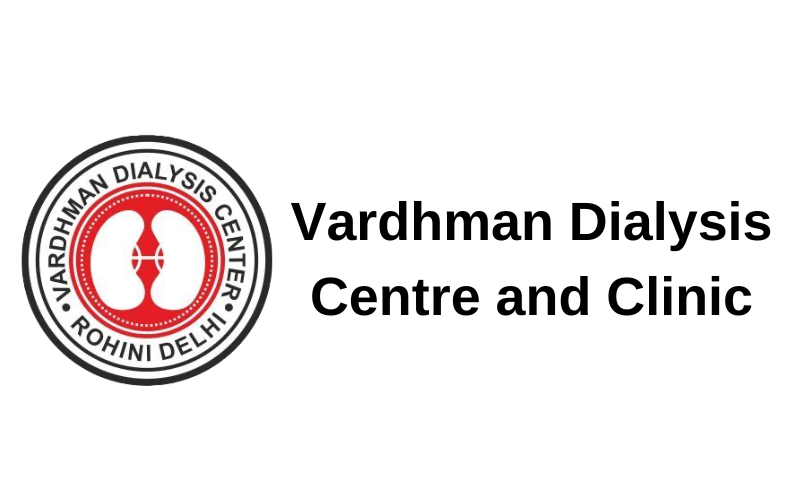Dialysis is a process applied to patients having kidney disorders where their kidneys lose their ability to filter waste from the body. It is a treatment needed to operate at the end stage of kidney failure, usually when kidneys lose 90% of its functioning.
There are prominently two broader types of dialysis, namely, Hemodialysis and Peritoneal dialysis.
Hemodialysis and peritoneal dialysis
Hemodialysis is a process where blood is taken outside your body for filtration and then returned to the body through tubes or machines. A dialyzer is used to carry out the normal functions of the kidney and to remove the excess fluid from the body. It can be performed both at a dialysis center and at home.
Peritoneal dialysis is a type of treatment procedure wherein the peritoneum, i.e. inner lining of your abdomen is used. The blood is purified using a cleansing solution known as dialysate.
It has cleansing properties by virtue of which it absorbs the fluid and waste materials from your blood with the help of peritoneum which is used as a filter. Like hemodialysis; peritoneal dialysis also has a certain diet and fluid intake restrictions.
This treatment is performed every day and so its limitations are not as broad as that of hemodialysis. It can also perform at home and especially during night time for making it more convenient for patients.
Let us understand the hemodialysis in detail:
How is Hemodialysis done?
In the procedure of hemodialysis, the blood is taken outside the body for filtration and then set back to the body with the help of artificial tubes. An average personal contains 10-12 pints of blood and during the dialysis process, only one pint is taken outside the body at a time. For this process, there needs access through which blood is taken out and put back in the body through the dialyzer. Broadly there are three accesses for performing hemodialysis: arteriovenous (AV) fistula, AV graft, and central venous catheter. A doctor or dialysis technician will decide which access to choose for a particular patient.
When on a hemodialysis treatment, the patient’s weight is the first thing to check. Depending on the weight, the doctors further decide on how much excess fluid has to be removed from the body during the process. The patients undergoing arteriovenous (AV) access will get two needles sticks in their access.
One for taking the blood out and others for putting it back. However, patients undergoing central venous catheter will be having two tubes attached to their blood tubes leading to the dialyzer and then back to the body. With that, the treatment of hemodialysis begins.
The dialysis machine is not used for transporting the blood in and out to the body. It is more like a giant computer screen with a pump. Its main function is to keep track of the blood flow, blood pressure and how much excess fluid is to be removed from the body. It stirs up the dialysate which is allowed to enter into the dialyzer.
This fluid extracts toxic contents out of the blood and then fluid goes down the drain. A dialysis machine is accompanied by a pump that keeps the movement of blood through blood tubes from body to dialyzer and then again to the body. This machine encompasses special features of safety detection as it gives warning signals whenever something goes wrong.
How does Hemodialysis work?
The main component of the hemodialysis treatment is the use of dialyzer. The dialyzer works as an artificial kidney and helps in the filtering of blood. It is basically a hollow plastic tube with foot long and having tiny filters connected to it. There are various sizes of dialyzers and it depends on the doctor which one he/she prescribes.
There are mainly two sections of dialyzer: section for dialysate and section for blood. Both sections were separated by a semi-permeable membrane. The membrane has tiny holes that permit only some substances like water and waste to pass through it.
Dialysate or dialysis solution or bath comprises of multiple components such as pure water, electrolytes, and salts, such as bicarbonate and sodium. The main objective of dialysate is to extract toxins out of the blood in it and the process involved in this whole mechanism is known as diffusion.
The blood of the hemodialysis patient consists of a high concentration of waste; on the other hand, the dialysate has a low concentration of waste. Due to the difference in concentration, the waste will move through the semi-permeable membrane to balance the amount on both sides.
The dialysis solution is then flushed down the drain along with the waste. The electrolytes in the dialysis solution also help in balancing the electrolytes present the patient’s blood.
The excessive fluid is taken out from the blood through the filtration process. The higher pressure is applied on the blood side than on the dialysate side.
How long will each Hemodialysis treatment last?
The treatment of hemodialysis is done 3 times for a time duration of 4 hours each week. But if you are having your hemodialysis treatment at your home, you can have it more frequently likes 4-7 times a week for a shorter duration.
The suitable duration of treatment for each patient is prescribed by a dialysis doctor. The research has proven that getting the right dialysis treatment will help in enhancing the overall health and functioning of the body.
The dialysis technician operates the patient with monthly lab tests to make sure that the treatment is getting done appropriately. Generally, the dialysis care team uses one of the following measures of dialysis namely, urea reduction ratio (URR) and the other one is Kt/V.
Hemodialysis diet
Patients undergoing hemodialysis treatment will have to take special care of their diet. Generally, doctors suggest increasing the protein intake in the diet. Other than that, it is highly recommended limiting the potassium, phosphorus, sodium in their diet.
Diabetes is a major cause of kidney disease and thus patients having diabetes are advised some particular prescriptions. So it is advisable to consult your dietician or doctor for your kidney disease diet. There are some common tips to practice with your diet during dialysis:
- Eat fresh or plain frozen vegetables as they do not contain salt which is harmful to kidney patients.
- Canned fruits and vegetables have low potassium content than fresh fruits.
- You can eat non-dairy creamers as they contain low phosphorus and can be replaced in the place of milk.
- Do read the labels printed on the food items you take from the market. These labels will provide you important information for ingredients to choose carefully.
- In order to avoid salt, you can use any herbs or spices to add flavor in your flood and make your food tasty to eat.
Is Hemodialysis effective?
Hemodialysis is a lifesaver process for patients suffering from renal diseases. It tends to perform some functions of the kidney artificially such as maintaining blood pressure and production of red blood cells. However, the treatment alone with not do the job. A balanced diet and certain fluid restrictions will assist in making the process more effective along with the necessary medications.
The people who choose to do their hemodialysis in a dialysis center enjoy many benefits like:
- They get proper and suitable care from the dialysis technicians or professionals.
- They can keep themselves busy by indulging in activities like reading, watching television, listening to music or other things available in centers.
- Since the hemodialysis is done 3-4 times a week, so it becomes comfortable for them to travel to the center and spend the rest of their days at home.
Also, people who choose to do their treatment at home enjoy the comfort of being at home and easy diet control. They can choose medications as per their schedule and manage other things as well.

